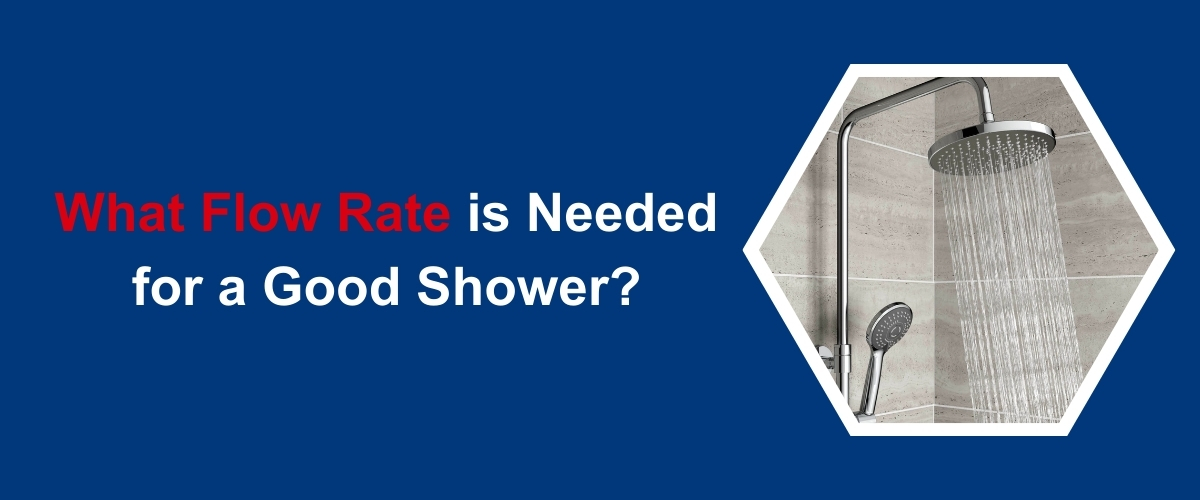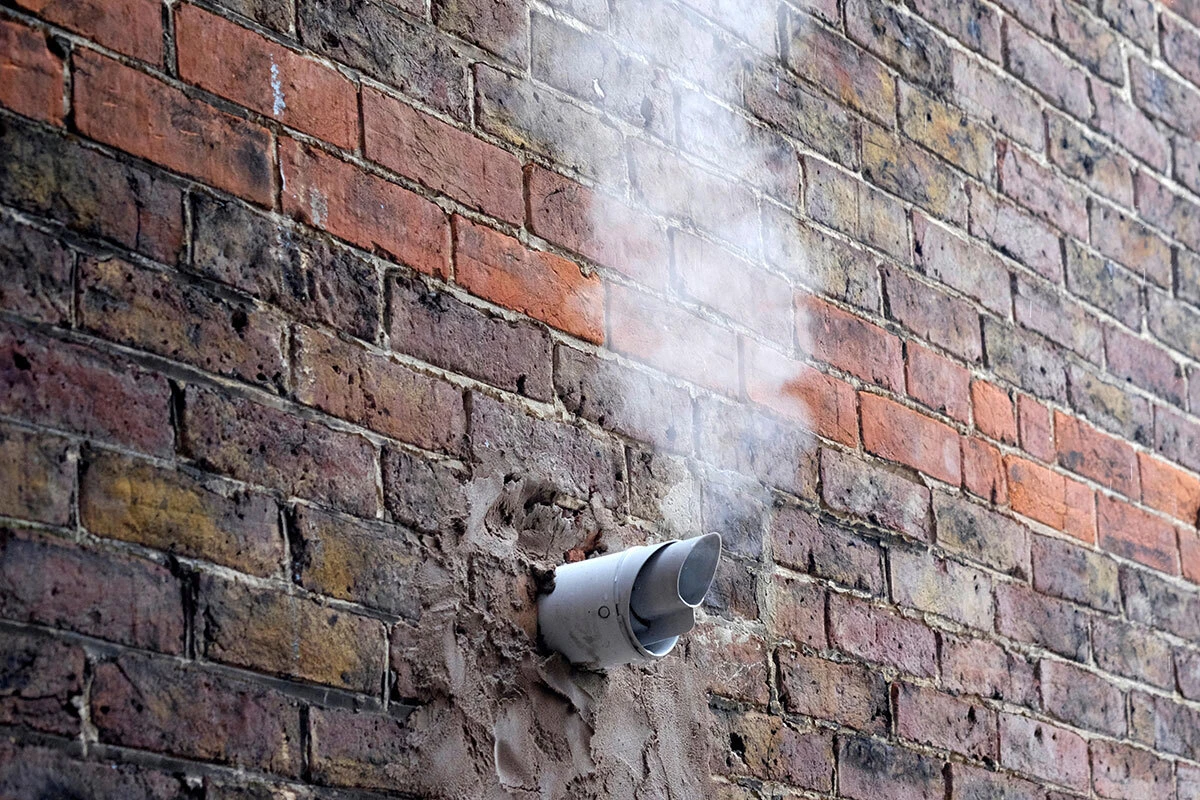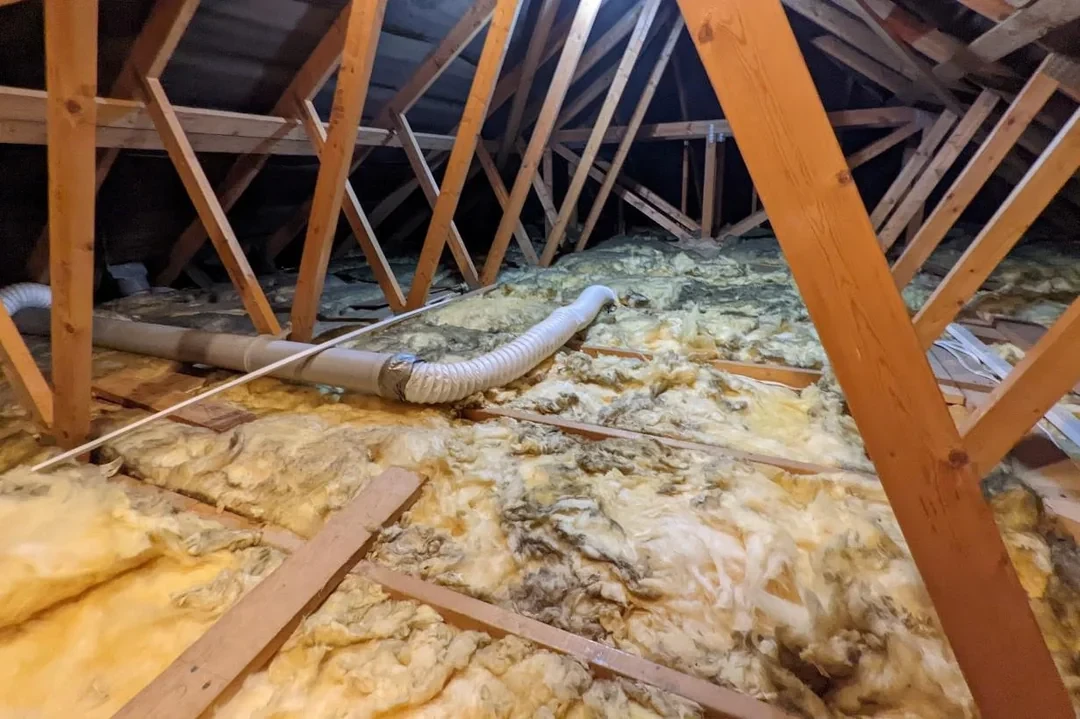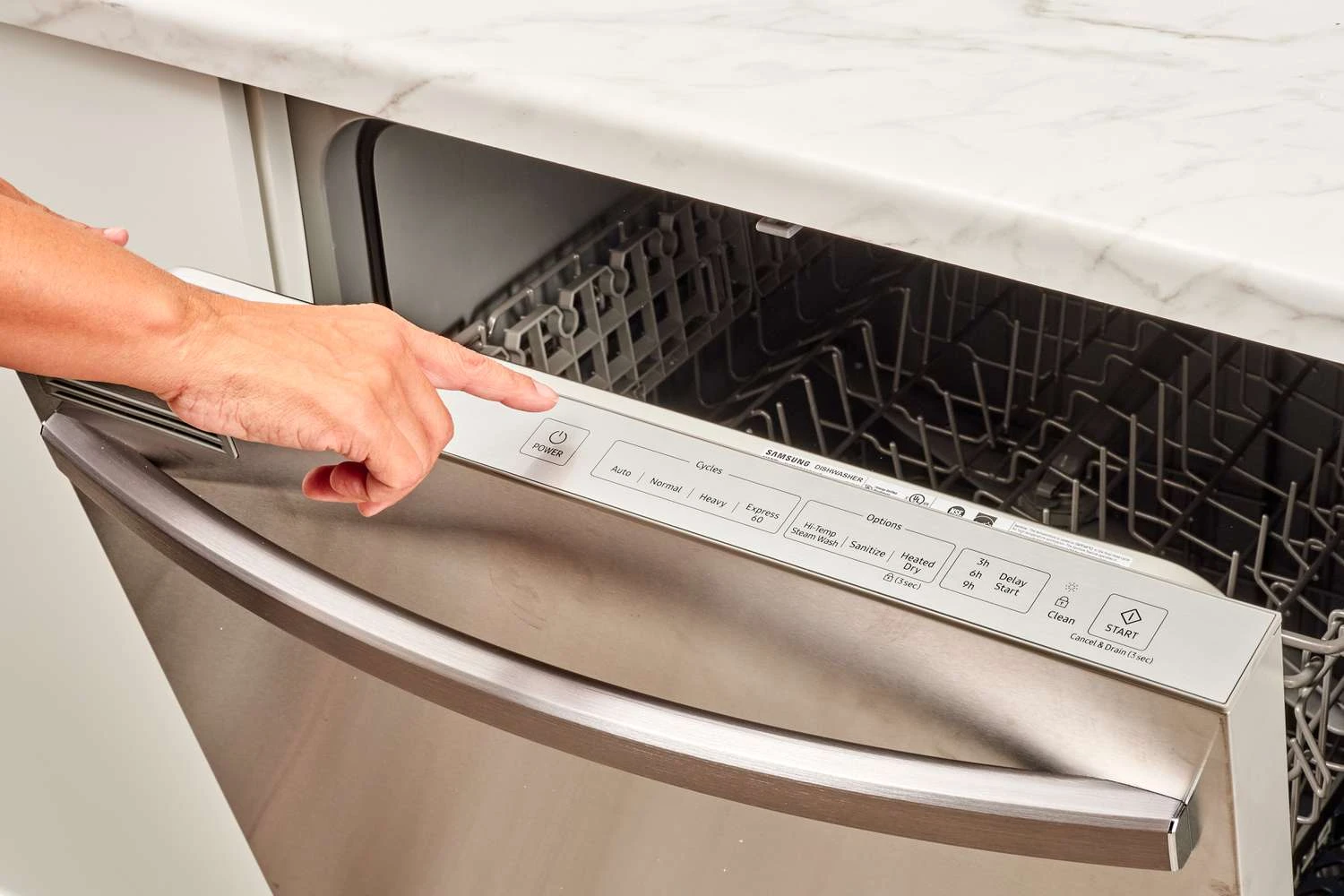09/08/2024
Contents
- Introduction
- Key Takeaways:
- What is Flow Rate?
- Why is Flow Rate Important for Showers?
- What is the Ideal Flow Rate for a Good Shower?
- What Factors Affect Flow Rate in Showers?
- How to Measure Flow Rate in a Shower?
- What are the Benefits of a Good Flow Rate in Showers?
- How to Improve Flow Rate in Showers?
- Frequently Asked Questions
- Need Help with your shower?

Introduction
Understanding flow rate is essential for creating the ultimate shower experience. It affects not only the pressure and comfort of your shower but also the efficiency of water usage.
This article explores what flow rate is and why it's particularly important for showers. It discusses the factors that impact flow rate, how to measure it, and the benefits of achieving an optimal flow rate.
Practical tips are shared to improve your shower’s flow, ensuring every wash is enjoyable and refreshing. Dive in to discover how to enhance your daily routine!
Key Takeaways:
A good flow rate is crucial for a satisfying shower experience.
Factors such as water pressure, pipe size and shower head type can affect the flow rate in a shower.
To measure flow rate, one can use a flow meter or a bucket and timer method. Improving flow rate can result in better water pressure, efficient water usage, and an enhanced showering experience.
What is Flow Rate?
Flow rate is a critical measurement in plumbing that defines the volume of water that can flow through a shower head per unit of time, typically expressed in litres per minute.
Understanding flow rate is essential for ensuring that a shower provides an invigorating experience and meets the traditional UK standards for water pressure, which can significantly impact user satisfaction and water efficiency.
Whether you are considering an electric shower, a power shower, or a gravity shower, knowing the flow rate can help you select the right shower mixer for your needs.
Why is Flow Rate Important for Showers?
The flow rate is vital for showers as it directly influences not only the quality of the shower experience but also the efficiency with which water is used.
A good shower experience is often characterised by sufficient water pressure that allows for an invigorating wash, while also ensuring an optimal temperature can be maintained.
Understanding the implications of flow rate can lead to significant energy savings and reduced water bills, making it essential for homeowners looking to improve their shower experience and reduce their environmental impact.
What is the Ideal Flow Rate for a Good Shower?
The ideal flow rate for a good shower typically ranges from 8 to 12 litres a minute, depending on the type of shower head and individual preferences.
This flow rate ensures a satisfying experience while allowing sufficient suds and rinsing capabilities. Achieving the perfect balance of flow rate not only enhances the showering experience but also adheres to guidelines that promote water conservation and efficiency.
Several factors contribute to determining this ideal flow rate, particularly the type of shower being used.
Electric showers, for instance, rely on a fixed flow rate, which can impact the overall experience, especially in low-pressure situations.
Power showers, on the other hand, offer a robust experience by boosting water pressure and flow, making them perfect for those who enjoy a more invigorating wash.
Gravity showers typically have a lower flow due to the reliance on gravity, which can be less satisfying for some users.
Lastly, shower mixers provide the flexibility of adjusting both water temperature and flow rate, catering to personal preferences.
Individual showering habits and the traditional UK standards can further influence what users deem ideal. For instance, those preferring quick showers might lean towards higher flow rates, while others who enjoy a leisurely experience may opt for something lower to conserve water.
Ultimately, finding the right flow rate is a blend of functional efficiency and personal comfort.
What Factors Affect Flow Rate in Showers?
Several key factors can significantly affect the flow rate in showers, impacting both performance and user satisfaction. These factors include water pressure, which is crucial for ensuring an invigorating experience, as well as the size and material of pipes that transport water to the showerhead.
Additionally, the type of showerhead plays a vital role in determining how effectively water is distributed, with designs that can either enhance or limit flow rates. Understanding these influences is essential for optimising any shower system.
Water Pressure
Water pressure is one of the most critical factors influencing flow rate in showers, as it determines how effectively water can be pushed through the system. The right balance of pressure and flow rate can transform your showering experience into a dreamy retreat from the stress of daily life.
In traditional systems, such as gravity showers, lower pressure can result in a less satisfying experience, while power showers are designed to achieve higher pressure for a more invigorating wash.
Understanding the relationship between water pressure and flow rate helps homeowners select the ideal shower head for their needs.
Different types of showers leverage water pressure in distinct ways:
Gravity Showers: These rely on the natural gravitational force to deliver water. Typically, they perform best when installed on higher floors, as the elevation increases pressure. A low water tank can lead to inadequate flow rates.
Power Showers: These systems utilise an integral pump to increase water pressure. This technology ensures a robust flow, even in homes where gravity showers might falter.
Pipe Size and Material
The size and material of plumbing pipes can significantly impact the flow rate experienced in showers, as they dictate the amount of water that can be transported efficiently. Larger diameter pipes generally allow for a higher flow rate, ensuring that the shower head delivers adequate water pressure. Conversely, if the pipes are constricted or made of materials that inhibit flow, users may experience reduced water delivery and pressure, diminishing the overall quality of the shower.
When selecting pipe sizes and materials, it is essential to consider overall plumbing efficiency. For example, copper pipes tend to provide better flow rates compared to plastic alternatives due to their smooth interior surfaces that reduce friction. The installation process plays a crucial role in maintaining optimal flow rates. Properly aligned and secured pipes prevent leaks and obstructions that could impede water delivery.
To optimise plumbing performance, regular maintenance is necessary. This includes:
Inspecting for mineral buildup or corrosion, especially in regions with hard water.
Ensuring that fittings and valves are functioning correctly.
Regularly checking the seals and connections to avoid leaks.
Ultimately, choosing the right materials and investing in proper installation and maintenance will significantly enhance the shower experience by maintaining strong flow rates and pressure.
Type of shower head
The type of shower head installed can dramatically influence flow rate, with various designs either promoting or limiting water flow. Shower heads equipped with flow restrictors can help conserve water while still providing a good shower experience, but may reduce the invigorating sensation some users prefer. Selecting the right type of shower head that balances water efficiency and user satisfaction is key to achieving the desired flow rate.
Among the numerous options on the market, there are distinct types of shower heads that cater to different preferences and needs. These include:
Standard Shower Heads: Often the most basic type, these fixtures deliver a consistent water pressure but may not include advanced features.
Low-Flow Shower Heads: Designed to use less water, these heads can significantly reduce water consumption while still delivering a satisfying shower experience.
High-Performance Shower Heads: These models offer enhanced pressure and a range of settings, ensuring an invigorating washing experience without compromising on water efficiency.
When selecting a shower head, it is essential to consider factors such as the flow rate, water usage, and personal preferences. Each type has its own set of advantages, and finding the perfect match can lead to a refreshing and environmentally conscious shower experience.
How to Measure Flow Rate in a Shower?
Measuring the flow rate in a shower is a straightforward process that can be accomplished using a few different methods, ensuring that your plumbing system is functioning optimally.
One common approach is to use a flow meter, which provides precise measurements of water flow, while another simple method involves using a bucket and timer to calculate the litres per minute. Both techniques give homeowners insight into their shower's water efficiency and performance.
Using a Flow Meter
A flow meter is an effective tool for accurately measuring the flow rate in a shower, allowing homeowners to assess water efficiency and shower performance easily.
By installing a flow meter in the plumbing line, users can monitor the litres per minute flowing through their showerhead, providing valuable insights into water usage and potential areas for improvement.
Understanding the operation of a flow meter enhances the ability to make informed decisions regarding water conservation. Typically, these devices use either mechanical or electronic sensors to track water movement.
Regularly checking the readings of a flow meter can help identify any unusual spikes in water consumption, which may indicate leaks or inefficiencies.
For optimal installation, consider placing the meter as close to the showerhead as possible, ensuring minimal obstruction and accurate measurement. It is also essential to account for any manufacturer guidelines and regulatory standards to comply with local water regulations.
With consistent usage of a flow meter, homeowners can enjoy both lower water bills and the satisfaction of contributing to sustainable water use.
Using a Bucket and Timer
Using a bucket and timer is a simple and practical method to measure the flow rate in a shower. By collecting water in a bucket for a specific period, homeowners can calculate how many litres are dispensed per minute, giving them a clear picture of their shower's performance and efficiency.
This straightforward technique not only aids in understanding individual water usage but also enhances awareness regarding overall water conservation efforts. Following a few easy steps can make this a seamless process for anyone:
Gather your materials: You’ll need a suitable bucket, a reliable timer, and a pen and paper for recording results.
Position the bucket: Place your bucket directly under the showerhead before turning on the water.
Turn on the shower: Allow the shower to run for a predetermined amount of time, typically 30 seconds to 1 minute.
Measure the collected water: After stopping the timer, note the amount of water accumulated in the bucket in litres.
Perform calculations: To find out the flow rate in litres per minute, divide the volume of water by the time taken (in minutes).
Adopting this method allows you to identify particularly high flow rates, encouraging adjustments that can significantly improve water savings.
What are the Benefits of a Good Flow Rate in Showers?
A good flow rate in showers offers numerous benefits that enhance both the quality of the shower experience and the efficiency of water usage. With a balanced flow rate, users can enjoy better water pressure that facilitates an invigorating wash, while also promoting more efficient use of water that can lead to saving money on utility bills.
Ultimately, this results in an enhanced showering experience that aligns with the needs of modern households.
Better Water Pressure
One of the primary benefits of maintaining a good flow rate in showers is the achievement of better water pressure, which directly influences the shower experience. High water pressure allows for a more invigorating and satisfying wash, ensuring that users are thoroughly cleansed and refreshed during their showers. Enhanced water pressure envelops individuals in a delightful cascade, creating a feeling akin to standing beneath a refreshing waterfall, which many find revitalising, especially after a long day.
In contrast, low-pressure systems can often lead to a frustrating experience, where water trickles down rather than cascades. This can hinder the ability to rinse off products effectively, leaving suds clinging to the skin and hair.
Common drawbacks associated with low pressure include:
Inadequate cleansing, as users struggle to wash away soap and conditioner.
Less enjoyable sensations, diminishing the overall shower experience.
Increased water usage, as individuals may try to compensate by prolonging their showers.
With better water pressure, one can feel an enveloping embrace of water, allowing for a refreshing, thorough cleanse that reinvigorates both body and mind.
More Efficient Use of Water
A good flow rate supports a more efficient use of water, which is increasingly important in today's environmentally conscious society. By optimising water flow, households can significantly reduce their overall water consumption, leading to lower utility bills and a positive environmental impact.
Efficient water usage not only fulfils daily needs but also promotes sustainability. Water efficiency enhances the showering experience, allowing users to enjoy invigorating showers while minimising waste. This balance ensures that households can indulge in necessary routines without compromising the planet.
As families become more water-conscious, they find themselves benefiting financially; reduced water bills translate into long-term savings that can be redirected towards other priorities.
Financial Savings: By conserving water, households can see a noticeable reduction in their utility expenses.
Environmental Impact: Less water consumption contributes to the preservation of natural resources and supports local ecosystems.
Hence, embracing water-efficient practices fosters a more sustainable lifestyle that benefits both the user and the environment.
Enhanced Showering Experience
An enhanced showering experience is a significant benefit of maintaining the right flow rate, as it combines optimal water pressure with user comfort. Those who enjoy a good shower will appreciate the invigorating sensation that comes from a well-designed shower head delivering appropriate flow rates, allowing for a relaxing and rejuvenating wash.
The flow rate, essentially the volume of water dispensed per minute, plays a crucial role in creating a fulfilling shower atmosphere. Research has shown that users often report a stronger sense of relaxation and satisfaction when experiencing a flow rate of around 2.5 gallons per minute (GPM).
This optimal flow not only ensures adequate coverage but also enhances the sensory experience, making each shower feel like a luxurious spa retreat. Individuals often cite a pleasant balance of water warmth and pressure as key elements in their favour.
Studies indicate that the right flow rate can alleviate stress and muscle tension.
Consumer feedback highlights a marked improvement in their daily routines due to an enjoyable shower experience.
Therefore, the impact of a good flow rate cannot be underestimated; it is integral to transforming an ordinary shower into a revitalising journey.
How to Improve Flow Rate in Showers?
Improving the flow rate in showers can be achieved through several practical steps, ensuring a better and more efficient shower experience. Regular maintenance, such as cleaning the showerhead and pipes, is essential to prevent mineral buildup that can restrict water flow.
Additionally, installing a low-flow showerhead can conserve water while still providing an invigorating wash. Homeowners may also need to check for leaks and consider increasing water pressure if necessary to optimise performance.
In some cases, upgrading your hot water system can dramatically improve your shower flow rate. If you have an older gravity-fed system, you may experience lower water pressure, particularly in upper floors. Replacing this system with a modern combi boiler, unvented cylinder, or another mains pressure system can provide a much stronger and consistent water flow throughout your home, including the shower. These systems are designed to deliver high pressure, ensuring an invigorating shower experience even in homes with multiple bathrooms or higher water demand.
For more information on how to change a gravity-fed system to a combi boiler, visit our guide on should you change your gravity fed system to a combi.
Clean Shower Head and Pipes
Cleaning the showerhead and pipes is a fundamental step to improve flow rate, as mineral build-up and blockages can significantly hinder water flow. Regularly removing the showerhead for cleaning, as well as flushing the plumbing system, can restore optimal flow and enhance the overall shower experience.
To ensure the longevity of your plumbing system and maintain steady water pressure, consider a few effective cleaning techniques. Start by unscrewing the showerhead and soaking it in a solution of equal parts white vinegar and water for about 30 minutes. This helps to dissolve mineral deposits.
While the showerhead is soaking, turn your attention to the pipes. Flushing your plumbing system with warm water can help dislodge any debris. For those hard-to-reach areas, using a fine brush or a pipe cleaner can be beneficial.
After cleaning, rinse the showerhead thoroughly under warm water.
Replace it carefully, ensuring a tight seal to prevent leaks.
It's advisable to perform this maintenance every few months. Regular upkeep not only improves water flow but also prevents future plumbing complications that could lead to costly repairs.
Install a Low-Flow Shower Head
Installing a low-flow shower head is an effective strategy to improve flow rate while promoting water efficiency. These shower heads are designed to restrict water flow without sacrificing the invigorating experience of a good shower, ensuring that homeowners can enjoy a satisfying wash while using less water.
Transitioning to a low-flow shower head can significantly reduce both water consumption and energy costs. With the average family spending hundreds of pounds annually on water bills, switching to low-flow options can lead to substantial monthly savings. Not only do they decrease the volume of water used, but they also lower the energy required to heat that water, improving overall household efficiency.
For example, models like the Moen 26100EP flow at a mere 7.5 litres per minute, compared to standard models that often use 11.4 litres or more.
The Delta 75152 provides an invigorating shower experience while using less water, making it a great eco-friendly choice.
Choosing a low-flow shower head not only promotes conservation efforts but can also lead to tangible savings for the household.
Check for Leaks
Checking for leaks in the plumbing system is crucial for maintaining and improving flow rate, as leaks can lead to significant water loss and reduced pressure. Regular inspections can help identify and rectify leaks early, ensuring that the shower performs optimally and conserves water.
For homeowners, being vigilant about potential leaks should be a priority. Common signs include the formation of unexplained puddles around fixtures, an increase in water bills without a corresponding increase in usage, or the sound of running water when systems are not in use. Addressing leaks promptly not only enhances functionality but also helps to avoid long-term damage.
Look for damp spots: Inspect ceilings, walls, and floors for signs of water seepage.
Monitor your water meter: Check if the meter is continuously moving when no water is being used.
Inspect fixtures regularly: Pay attention to areas around taps and toilets.
If a leak is detected, it’s essential to act quickly:
Shut off the water supply to prevent further damage.
Contact a plumber for professional assessment and repair.
Document any damage for insurance claims if necessary.
Taking these steps will not only help maintain an efficient plumbing system but also contribute to substantial savings over time.
Increase Water Pressure
Increasing water pressure can be an effective solution for improving flow rate in showers, particularly in homes with low pressure due to plumbing designs or municipal supply issues. Homeowners can explore various options, such as installing a pressure-boosting pump or ensuring that their plumbing system is free from blockages.
Understanding how to enhance water pressure can significantly impact daily routines. One method includes regularly flushing the water heater to eliminate sediment buildup that often contributes to reduced pressure. Examining the plumbing for leaks can reveal problems that must be addressed.
Below are some popular methods homeowners might consider:
Pressure-Boosting Pumps: These devices efficiently increase overall water flow. They require an investment and may necessitate electrical connections.
Pressure Regulators: Installing or adjusting these can help to balance pressure levels, particularly in homes with fluctuating municipal supply. Yet, improper adjustments can lead to further complications.
Pipe Replacement: Upgrading to larger diameter pipes can facilitate a higher flow rate. This option is effective but involves significant labor and cost.
When faced with persistent low water pressure after trying these measures, it may be prudent to consult a professional plumber to diagnose underlying issues accurately.
Frequently Asked Questions
What flow rate is needed for a good shower?
The recommended flow rate for a good shower is between 9.5-10.6 litres per minute (lpm). This ensures a steady and comfortable stream of water without wasting excess amounts.
How do I know the flow rate of my shower?
To determine the flow rate of your shower, you can either use a flow rate calculator or measure the amount of water that comes out in one minute using a bucket and stopwatch. Divide the amount of water by 60 seconds to get the flow rate in lpm.
What happens if my shower has a low flow rate?
If your shower has a low flow rate, you may experience a weak and unsatisfying water stream. It can also take longer to rinse off soap and shampoo, resulting in a longer shower time and higher water bills.
Can a high flow rate damage my shower?
Yes, a high flow rate can cause damage to your shower by putting excess strain on the plumbing system and increasing the risk of leaks. It can also lead to water wastage and higher utility bills.
Do all shower heads have the same flow rate?
No, shower heads can have different flow rates depending on their design and water-saving features. Some shower heads may have a flow rate as low as 6 litres per minute, while others may have a higher flow rate of up to 22.7 litres per minute.
Can I adjust the flow rate of my shower?
Yes, some shower heads have adjustable flow rates, allowing you to control the amount of water that comes out. You can also install a flow restrictor to reduce the flow rate and conserve water.
Need Help with your shower?
Our expert shower installers in Hull, East Yorkshire, and North Lincolnshire specialise in shower installations. Whether you need technical advice on choosing the right shower, want to improve your flow rate, or are ready for a new shower installation, our team is here to help. Contact us today on 01482 770650.
Other related guides
Will My Shower Work Without Power?
How Does a Shower Pump Work?
What Shower Pump Do I Need?
Best Temperature For a Shower
What Shower Is Best With a Combi Boiler?
How Much Does a Plumber Cost to Install a Shower in the UK?













